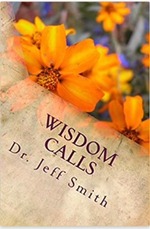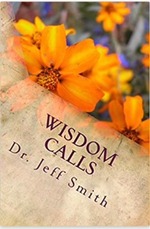Go to Siloam and Wash
 Tuesday, October 4, 2011 at 10:16AM
Tuesday, October 4, 2011 at 10:16AM The miracles of Jesus were amazing and their authenticity was difficult to deny, even for his enemies who were devoted to his destruction in spite of them. Although the signs and wonders he worked were great, many people insisted upon rejecting his teaching and his authority, just as they do today. Our attitude should always be a rather simple one when we are confronted with the person of Christ in Scripture – we ought to be ready to comply with his instruction, knowing it is in our best interest, even if it compels us to crucify our pride, to risk becoming a spectacle, or to subject ourselves to overwhelming personal change.
devoted to his destruction in spite of them. Although the signs and wonders he worked were great, many people insisted upon rejecting his teaching and his authority, just as they do today. Our attitude should always be a rather simple one when we are confronted with the person of Christ in Scripture – we ought to be ready to comply with his instruction, knowing it is in our best interest, even if it compels us to crucify our pride, to risk becoming a spectacle, or to subject ourselves to overwhelming personal change.
Discussion
I. The Man Born Blind (John 9:1-11)
A. Who Sinned?
1. in olden times, the Jews, like some people today, assumed that every personal tragedy was directly traceable to some major moral infraction; the Pharisees, in their cruel ignorance, would accuse him of being born in utter sin (verse 34)
2. that is the reason the friends of Job interrogated him so mercilessly and the reason that Job himself suspected a divine oversight or injustice was responsible for his unparalleled suffering
3. when the disciples questioned Jesus about the root of this man’s blindness, it was a theological question, with no assumption that the Lord would answer as he did or take a personal interest in the man’s plight
4. we learn something consistent with the much older story of Job, that not only are some hardships the result of personal sin, but that many, especially those that are congenital, are attributable sometimes to chance and sometimes to a divine plan to work some great wonder or teach some enduring truth
5. both his parents and this man had sinned, for all sin and fall short of God’s glory, but neither had sinned in such a way that vision was naturally reduced or divinely taken; rather this man had endured decades of blindness in exchange for the gift of being a part of the gospel story and the joy of recovering something as precious as his vision
B. Go, Wash
1. there are times when Jesus heals without asking anything of the person being healed except for a faithful verbal response; there is even one time when power is discharged from his body into the crippled figure of an aged woman who brushed against the hem of his garment
2. on this occasion, a Sabbath day, Jesus was intent on teaching something more profound, something that would require a more active response, and even a form of baptism that existed parallel to the immersion in water that was a familiar part of his and John’s ministry
3. Jesus, after making the man a strange mud pack for his eyes, sent him to the pool of Siloam to wash, and he simply came back with his vision
C. I Am The Man
1. by kneading the clay to make mud, Jesus had violated the traditional interpretation of the elders about what constituted forbidden work on the Sabbath, but the Lord – no interpreter, but legislator and judge – knew that his act of mercy could not be bound by the calendar
2. his neighbors brought him to the attention of the Pharisees, who accused him of impersonating the blind beggar, but he courageously identified himself as the man whom Jesus healed, even when his parents demurred
3. when again, he met Jesus, he learned the spiritual significance of his healing (John 9:35-41)
4. there is a connection between teaching, illumination, humility and obedience that confounds people who are more attached to their sin, or to their creeds, opinions, and traditions, but the humble will crucify their pride to be healed, not of physical blindness, but spiritual
II. Going to Siloam
A. Blindness
1. the Bible writers frequently compared Jesus to a source of light, welcome to those aware of their blindness, but loathed by others who preferred to work out their iniquities under cloak of darkness (John 3:16-21)
2. his is the kind of light that can be ignored only by disbelief and disobedience (John 1:5, 9-13)
3. he would teach, “I am the light of the world. Whoever follows me will not walk in darkness, but will have the light of life” (John 8:12).
4. one can be educated, opinionated, articulate, even religious, and yet still be blinded to spiritual and scriptural realities that defy scientific explanations or ecclesiastical tradition (Ephesians 4:17-21)
B. Teaching
1. that teaching of Christ, including the truths he inspired at the hand of the New Testament writers, is the evidence of his continued power to illuminate, so “the people dwelling in darkness have seen a great light, and for those dwelling in the region and shadow of death, on them a light has dawned”
(Matthew 4:16).
2. the essence of that message, then, was, “Repent, for the kingdom of heaven is at hand” (Matthew 4:17).
3. now, the kingdom is nearly two thousand years old, with Christ reigning over it as king and inviting sinners to become citizens as they are joined to the church; his teaching is the light and life of the kingdom, a covenant defined by love and truth and righteousness – a perfect law of liberty
C. Pride
1. pride gets in the way, creating a cacophony of dissonance as sinners cling to their habits and believers resist obedience on creedal grounds
2. most want to have a sense of salvation that does not interfere with their enjoyment of selfish, immoral, or self-destructive behavior, while others insist on swearing allegiance to a denominational creed, even where it conflicts with the clear intent of the New Testament
3. pride not only goes before a fall, but it holds people down for the devil as well: “When pride comes, then comes disgrace, but with the humble is wisdom” (Proverbs 11:2).
4. pride in their position kept the Pharisees from considering that Jesus might have been the genuine savior, and pride today in scientific skepticism, denominational tradition, and human ingenuity likewise destroys people’s willingness to bow before the savior and “God opposes the proud, but gives grace to the humble” (James 4:6).
D. Siloam
1. nowhere is that more evident than at the pool of Siloam, where Jesus sends the sinner to be cleansed, but where he sometimes stumbles over himself or some decree from afar
2. the command to be immersed in water for the forgiveness of sins is plain throughout the writings and history of the first century church, but it survives among Catholics and Protestants mostly as a corrupted relic, rather than a necessary act of faithful subjection before “the source of eternal salvation to all who obey him” (Hebrews 5:9).
3. Siloam is the creek, the river, the baptistery, even the bathtub where the penitent respond to Jesus with a willingness to be humbled and immersed for the remission of sins
4. this light was so astounding to Saul of Tarsus that he was blinded by it, but when his sight returned, he hastened to obey Jesus and be cleansed, not only of spiritual blindness, but every sin (Acts 22:11-16)
Conclusion
Do not stumble on the way to Siloam, for it is not physical blindness, but spiritual, that follows sin. Jesus lights the way with his word and example so that we can have our vision restored and be saved.
Questions for Review
- Who sinned that this man was born blind?
- How do some people still believe this is the case?
- What do we learn from Job about the reason for tragedy?
- What was the significance of Siloam to his healing?
- What causes and cures spiritual blindness?
- What can prevent the restoration of spiritual sight?
- How do we know baptism is essential to salvation?
 Jeff Smith
Jeff Smith


